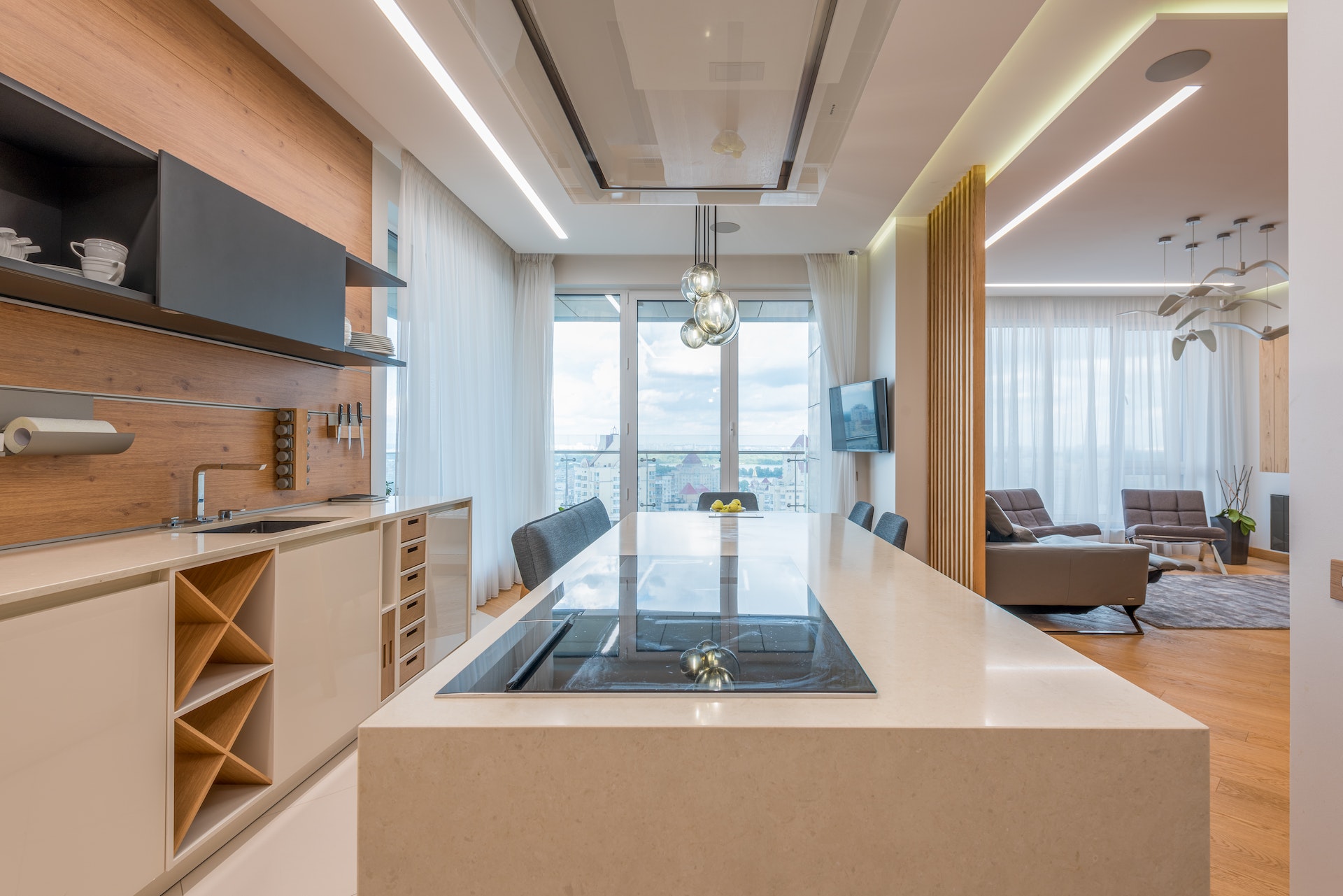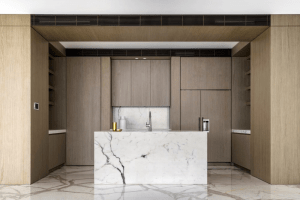If you’re considering different options for your kitchen benchtop, a marble kitchen island may be the best option for a variety of reasons.
Versatile in design and aesthetic, it also provides plenty of opportunity for infusing extra storage, working space and even dining areas.
A custom cut marble kitchen island can transform just about any kitchen. To help you get started designing and conceptualising the right island benchtop for you, here’s a handy guide about everything you need to know.
Why consider a Marble Kitchen Island?
Kitchen islands are defined as a freestanding kitchen benchtop that normally is located in the centre of a kitchen. While mobile benchtops exist, the majority of islands are permanently installed.
A variety of materials, such as wood, metal, concrete and stone, can be used for a kitchen island and many different features of your kitchen (e.g., cabinetry, cooktops, sinks, seating areas, bar fridges, wine storage, dishwashers etc.) can be incorporated into the benchtop itself.
Some of the many different benefits of a kitchen island include:
- Extra workspace and food preparation area.
- More storage opportunities and organisational potential.
- Greater design flexibility.
- Better foot traffic flow in your kitchen.
- Increased value to your home.
Similarly, using marble stone offers many advantages too, such as:
- High levels of durability and hardiness.
- Style and aesthetic flexibility.
- Easy to clean and maintain.
- Adds to your home’s resale value.
- Hygienic material for use in the kitchen.
- An amazing look!
How to Create a Custom Marble Kitchen Island
- Choose a Style
The first thing to understand about kitchen islands is that there is actually a lot of variety in style and type. The style that is right for you should be the first consideration you take into account. After all, each style comes with unique features that may affect the other options on the table. (No pun intended!)
Consider your kitchen before choosing your island. How big is it? What shape is it? What’s the general style of your kitchen and of your home in general?
The marble kitchen island needs to complement your interior design style while also being functional and practical in your existing kitchen space.
Option 1: Traditional Island
Traditional kitchen islands often feature different materials as well as marble, such as wood, and can include details such as decorative moldings or raised panel cabinets. While quite versatile in application, being inoffensive and timeless, traditional benchtop islands may not be right for every kitchen if you’re opting for a unique aesthetic.
Option 2: Modern
The benefit of a marble kitchen island is that you can just as easily create a contemporarily looking benchtop as a traditional one. Modern islands are sleek and minimalist with clean lines and monochromatic colouring.
Option 3: Rustic
Marble can also be used to great effect to complement a rustic kitchen. Considering that marble is in fact a natural stone, it can perfectly complement classic rustic materials such as reclaimed wood or even brick.
Option 4: Industrial
The unique aesthetic of industrial kitchens may not appeal to everyone, but the raw and unfinished design is certainly bold and beautiful. You can achieve a marble kitchen island in an industrial style by using open shelves and/or cabinets.
Option 5: Custom
A custom kitchen island is exactly what it sounds like: a tailored benchtop to suit your particular preferences and needs. Consider a custom made marble sink incorporated into the top surface, for example. Or opt for a ‘waterfall’ island design. The benefit of marble islands is that there is plenty of scope and opportunity to customise and create the perfect look and feel for you.
- Choose the Right Marble
Did you know that there is more than just one type of marble? While there are certainly classic styles of marble stone, think white shading with grey veining, there is actually an enormously wide range of marble types, colours, patterns and styles.
And that’s not all! Even the finish of your marble kitchen island can be customised to suit your preferences. Considering the aesthetic and style of your kitchen when looking at different types of marble is important. However, you may also want to bear in mind durability as well, as different types of marble may be best suited to different applications and exposure to daily activity.
- Call in Euro Marble
The team here at Euro Marble are happy to help you every step of the way in the journey towards your custom marble kitchen island.
Of course, if you’re set and confident about your style and choice of marble, we’re ready as well! Contact our team about creating and building your marble kitchen island. We’ll help you understand everything you need to know about the sourcing, creating and installing of your brand new marble countertop.
- Care for your Marble
Nothing quite compares to a marble kitchen island, if we may say so ourselves. However, marble–while durable and hardy–does need some ongoing maintenance and care to ensure it looks and functions the way it ought to.
For one thing, clean up spills and liquids immediately to prevent staining. Never place hot pots or other items directly onto the marble and avoid cutting directly onto the stone where the surface could get scratched.
Regular professional resealing will also help ensure that the marble itself remains non-porous and looks as amazing as it should.
Let’s Talk Marble Kitchen Islands!
A custom cut marble kitchen island benchtop is a fairly affordable and easy way to take your entire home to the next level.
If you need any assistance in choosing the right marble or settling on the perfect kitchen benchtop design, make sure to speak to the Euro Marble team today. We’re here to help!





